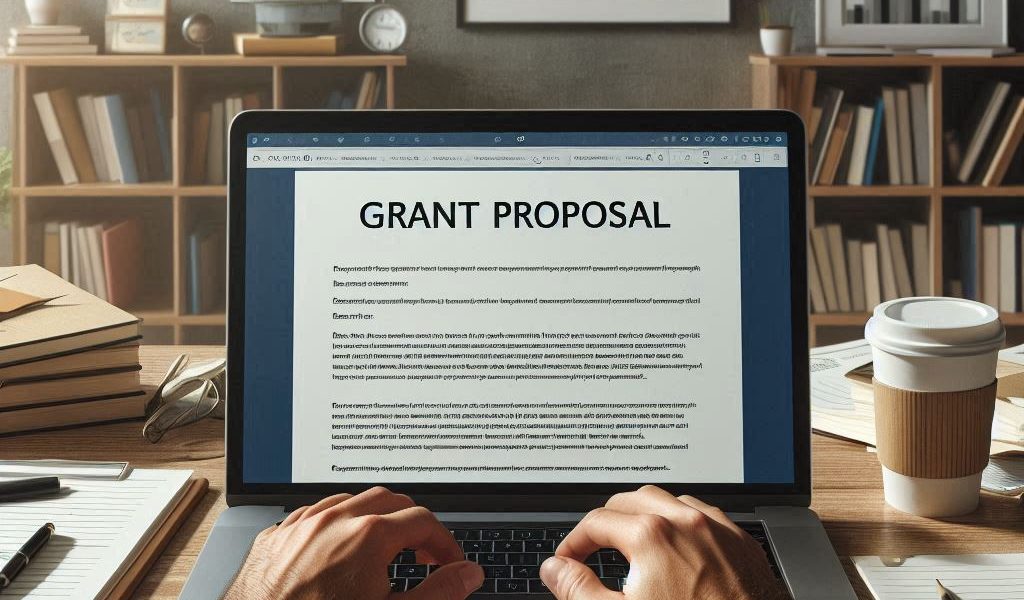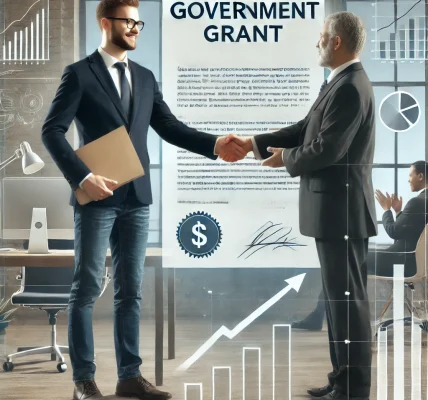In today’s competitive environment, applying for government grants has become a significant way for individuals, startups, non-profit organizations, and businesses to secure funding for various projects. Whether you are a social entrepreneur, a research scientist, or a community advocate, understanding how to write a compelling grant proposal is essential to unlock the financial support you need. In this blog, we’ll guide you through the process of writing a winning grant proposal for government funding, ensuring you increase your chances of success and avoid any potential legal pitfalls.
Understanding Government Grants and Subsidies
Government grants are financial awards that do not need to be repaid, intended to fund specific projects or initiatives that align with the government’s objectives. These grants can be allocated to various sectors, including education, research, agriculture, technology, and community development.
Before starting the proposal process, it is crucial to understand the types of government grants available, which include:
- Project Grants – For specific projects aimed at achieving set objectives.
- Research Grants – To fund scientific or academic research.
- Program Grants – For ongoing or long-term programs.
- Operational Grants – To cover the day-to-day operations of an organization or business.
- Start-Up Grants – Financial support for new businesses or ventures.
Knowing which category your project falls into is the first step to finding the right type of funding.
The Importance of a Well-Written Proposal
A well-written grant proposal is essential because it serves as the foundation for securing government funding. A grant proposal provides a clear roadmap for how the money will be used and demonstrates that your project aligns with the funding agency’s goals.
A solid proposal is not just about presenting ideas; it is about convincing the government agency or funder that your project is worth supporting. Moreover, writing a proposal involves attention to detail, structure, and the ability to communicate the benefits of your project convincingly.
Key Elements of a Winning Grant Proposal
- Executive Summary
The executive summary is the first impression of your proposal and should be written last, even though it appears first in the document. It needs to summarize the entire proposal and highlight the project’s objectives, methods, expected outcomes, and funding requirements.
- Briefly describe the project.
- State the specific problem you intend to solve.
- Mention the funding amount requested.
- Emphasize the importance and potential impact of the project.
Keep it concise, clear, and engaging to capture the funder’s attention immediately.
- Statement of Need
This section explains the problem or issue your project aims to address. It should make a compelling case for why your project is necessary and how it aligns with the goals of the government grant program.
- Use data, statistics, or case studies to highlight the significance of the problem.
- Describe the gap in services or resources that your project will address.
- Explain the long-term benefits of solving the problem.
Make sure to demonstrate that the issue is urgent and requires government intervention.
- Project Description
In this section, you’ll outline the specifics of how you plan to implement the project. Include detailed information on the activities, timeline, and the resources you will use.
- Objectives: Clearly state the goals and the outcomes you hope to achieve.
- Methods: Describe the activities and strategies that will be employed to achieve the project’s goals.
- Evaluation: Outline how the success of the project will be measured.
- Sustainability: If applicable, explain how the project will continue after the initial funding is exhausted.
Be as specific as possible so that the government agency understands exactly how you will use the funding.
- Budget Justification
A well-planned budget is crucial for convincing the funder that you will manage the grant responsibly. Break down the entire project budget into clear, detailed categories and explain how each expense will be allocated.
- Personnel costs (e.g., salaries, benefits, etc.)
- Equipment and supplies (e.g., technology, materials, etc.)
- Travel costs (if applicable)
- Contractual services
- Other costs (overhead, administrative fees, etc.)
Ensure that the total cost aligns with the funding you are requesting and justifies the expenses logically.
- Organization Information
Provide background information about your organization or business, explaining why you are the right entity to carry out the project.
- History: Describe your organization’s mission, history, and any past projects similar to the one you are proposing.
- Staff: Highlight the qualifications and experience of the team members who will be working on the project.
- Capacity: Show that your organization has the necessary infrastructure, resources, and expertise to manage the proposed project.
The funders need to know that you have the capability to deliver the project successfully.
- Conclusion and Call to Action
Finish the proposal by summarizing the key points and emphasizing the importance of funding the project. Reiterate how the project aligns with the funding agency’s goals and vision.
- Restate the benefits of funding your project.
- Thank the reader for considering your application.
- Provide clear instructions for the next steps in the application process.
Tips for Writing a Winning Grant Proposal
- Follow the Guidelines: Always read the grant guidelines carefully. Each grant has its own requirements, and failure to adhere to them can lead to disqualification.
- Use Clear and Concise Language: Keep the language straightforward and professional. Avoid jargon and overly complex sentences. The goal is to ensure your ideas are easily understood.
- Be Realistic: Set realistic goals and timelines. Over-promising or unrealistic proposals can be flagged and disqualified. Be honest about what can be achieved with the funds requested.
- Proofread and Edit: Typos, grammatical errors, or inconsistencies can undermine the credibility of your proposal. Proofread your document multiple times, or have someone else review it for clarity and accuracy.
- Show the Impact: Emphasize how the project will benefit the community or society. Be specific about the outcomes and how the government’s funding will help achieve these goals.
- Demonstrate Sustainability: Government agencies want to see that your project will have long-term benefits. Show how you plan to continue the project after the initial grant is used.
- Be Honest and Transparent: Avoid exaggeration. Transparency builds trust, which is critical in a grant proposal.
Conclusion
Writing a winning grant proposal for government funding is not a simple task, but with careful preparation and a thorough understanding of what is required, you can significantly increase your chances of success. A clear, well-organized, and compelling proposal will showcase your project’s potential, demonstrate the alignment with government objectives, and prove that you can manage the funding responsibly.
By following the steps outlined in this blog, you’ll be well on your way to securing the funding you need to bring your ideas to life. Always remember to stay organized, stay true to your mission, and provide clear evidence of your project’s value. Good luck!




